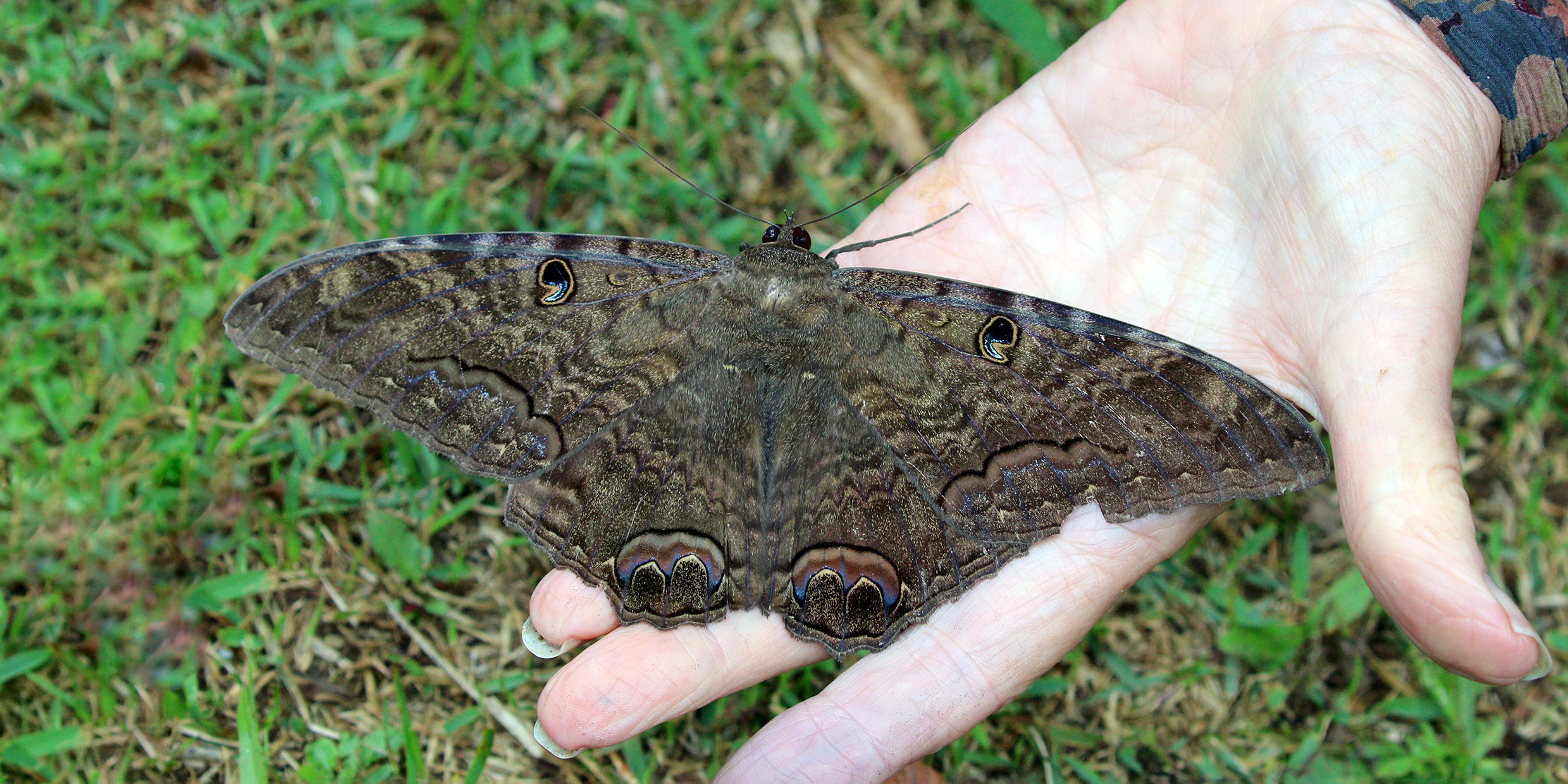Originally published 12 February 2002
EXUMA, Bahamas — We call it “the Year of the Bats.” Not your usual bats — the furry, warm-blooded mammals that skate the night sky and (according to myth) get caught in your hair. No, our “bats” are not bats at all; rather they are large black-brown moths with an 8‑inch wingspan, as big as an adult hand.
The common name is giant bat moth, but they are simply “bats” to Bahamians. In past years, there have always been one or two about at night, usually plastered against a window screen. This year, for unexplained reasons, their population exploded.
We see them everywhere, brushing the stars with their big dusty wings. They flutter overhead while we eat in an outdoor restaurant. They land on our heads and shoulders as we sit on our terrace with friends, even perching on fingertips, attracted by the scent of sweet white wine. In morning light, we see dozens as road kill.
In nearby Cuba, the giant bat moths are known as brujas, “witches.” Throughout the islands, it seems, they are thought to be embodied spirits. Tonight, as I washed dishes, 10 bat moths fluttered softly against the screen above the kitchen sink, under the redwood louvers of the window. It is not hard to imagine them as miniature human corpses cloaked in death’s black cloths.
We have, it seems, a fierce attraction to the world of spirits — spooks, poltergeists, disembodied souls, out-of-body experiences. Mostly, I think, we are drawn to these things because we intuit — correctly, as it turns out — that there is more to the world than meets the eye. We inherit the spirit world from a time when our ancestors huddled in dark shelters at night and let their imaginations draw up creatures more or less like ourselves but lacking corporeal substance.
But why should I care about spirits when I can watch a coven of giant bat moths flex their moire wings against the window screen? Why should I look for treasure in heaven when 10 pairs of arthropodal eyes glow at my kitchen window like tiny rubies? Why should I wish for out-of-body experiences when it is my body that connects me through the five open windows of my senses to the sights, sounds, tastes, smells, and tactile sensations of the tropic night?
And, if I really want more than meets the eye, I should practice on this — the invisible flame of the DNA.
Even as I watch the moths at the window, a flurry of activity is going on in every cell of their bodies. Tiny protein-based “motors” crawl along the strands of DNA, transcribing the genetic code into single-strand RNA molecules, which in turn provide the templates for building the many proteins that are the moth’s warp and weft. Other proteins help pack DNA neatly into the nuclei of cells and maintain the tidy chromosomes. Still other protein-based “motors” are busily at work untying knots that form in DNA as it is unpacked in the nucleus of a cell and copied during cell division. Others are in charge of quality control, checking for accuracy and repairing errors.
Working, spinning, ceaselessly weaving, winding, unwinding, patching, repairing — each cell like a bustling factory of a thousand workers. A billion cells in each moth’s body humming with the business of life; and not just in the moths but in my body, too; and in the tiny grain-sized ants that scurry on the kitchen countertop; the geckos and free-toed frogs in the garden outside the window; the sea grape and bougainvillea; all of it astir.
The more one thinks upon it, the more unbelievable it seems.
But there is nothing theoretical about any of this. Scientists have provided us with a complete transcription of the human genome, a listing of the tens of thousands of genes that are the plan of a human life, many of which we share with other creatures. They have found ingenious ways to manipulate the DNA — stretch it, snip it, splice it, watch the protein motors at work, measure their speed.
What a thing it is to think of ourselves as manifestations of this invisible molecular machinery, ceaselessly animating the universe with sensation, emotion, intelligence. Oscar Wilde said, “The true mystery of the world is the visible, not the invisible.” The smallest insect is more worthy of our astonishment than a thousand choirs of angels. The buzzing business of a single cell is more infused with eternity than any disembodied soul. The greatest miracle of all is as close as my next breath.
As I stand by the kitchen sink, I try to refocus my attention away from the moths and attend instead to the thing I cannot see but know to be there, the endlessly active, architecturally simple unity of life — the tropical night aflame, burning, burning.



